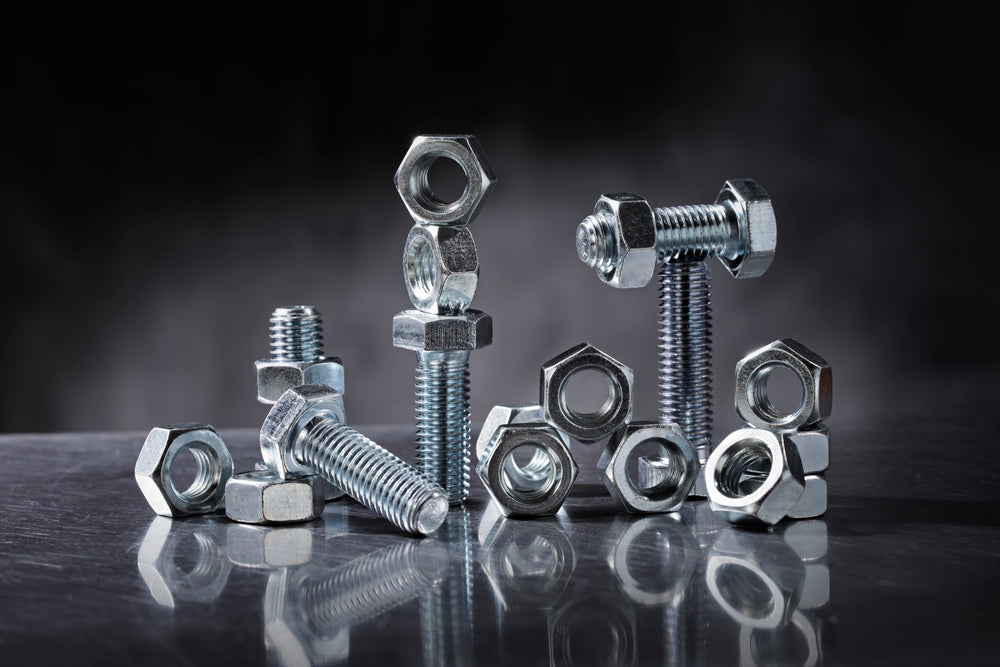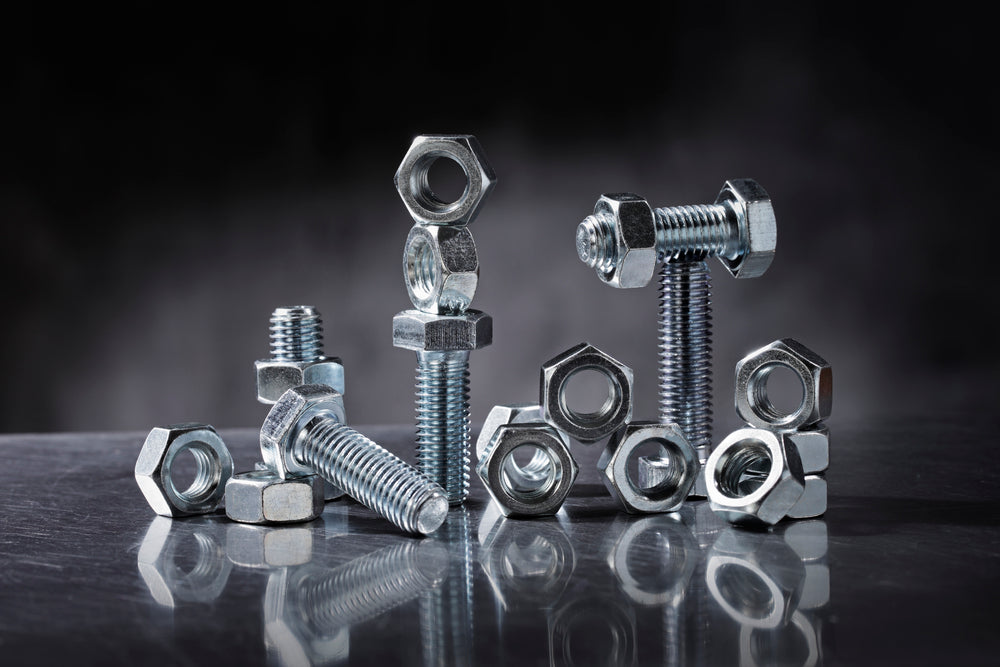
When delving into the construction and manufacturing industry, the query "What are fasteners?" often arises. As trivial as they seem, fasteners play a pivotal role in holding our world together. These small yet crucial components ensure that structures, machines, and various items remain intact and functional. With myriad types available, understanding the basics of these unsung heroes of the engineering world can significantly enhance the precision and efficiency of any project.
The Essence of Fasteners
At its core, a fastener is a tool that mechanically connects or attaches multiple items. Their primary function is to form joints that are not permanent, meaning these connections can be taken apart without harming the linked parts. Whether towering buildings, complex machines, or the small devices we frequently use, fasteners are essential in maintaining integrity and operation.
The Expansive World of Fasteners
While there is a multitude of fasteners available in the market, they can be broadly categorized into a few fundamental types:
- Screws
A cornerstone in the fastener family, screws boast external threads designed to dig and grip into materials they are driven into. This action ensures a steadfast connection, resisting pull-out. Their adaptability is evident in their variety; wood screws are tailored to provide maximum grip in wooden structures, while machine screws cater to metal or pre-tapped holes. Additionally, self-drilling screws simplify processes by removing the need for pre-drilling, combining drilling and fastening into a single action.
- Bolts
While visually similar to screws, bolts function differently. Designed for pairing with nuts, bolts rely on pre-drilled holes. Once inserted, they are fastened securely using a nut on the opposite end. The vast world of bolts includes hex bolts, known for their hexagonal heads, and carriage bolts, with their unique rounded head and square sections underneath. U-bolts, shaped as their name suggests, are pivotal for securing items like pipes, while anchor bolts firmly root structures into concrete.
- Nuts
Nuts serve as the anchoring force for bolts, featuring internal threads that marry perfectly with the external threads of bolts. This symbiotic relationship offers unparalleled strength, explaining its omnipresence in the construction and automotive sectors. Depending on the application, different nut variants like wing or cap nuts may be employed to ensure optimal performance.
- Washers
Often underrated, washers are pivotal in preserving the fastened material's life. These thin plates, typically round, act as buffers, distributing the load of a tightened nut or bolt evenly. This even distribution prevents the fastener from embedding into the material, protecting against wear and deformation. Beyond just load distribution, specialized washers also aid in locking, sealing, or improving aesthetics.
- Rivets
A testament to permanence, rivets provide an enduring joint between materials. Comprising a smooth, cylindrical shaft topped with a head, they are driven into pre-made holes. Post insertion, the protruding end is hammered or "upset," creating a secondary head. This dual-headed design ensures materials remain locked together. Rivets have historical significance, with their usage evident in structures like the Eiffel Tower and numerous aircraft.
- Pins
Precision and alignment are vital in many assemblies, and pins address this need. Crafted commonly from robust materials like steel, they provide alignment or pivot points in assemblies. While straight pins offer straightforward alignment, tapered pins wedge into position, ensuring a tight fit. On the other hand, rolled pins are hollow, slotted cylinders designed to be driven into holes, where they exert outward pressure to hold in place.
Applications and Importance
The significance of fasteners transcends their size. They are critical in almost every industry, from aerospace and automotive to electronics and construction. Whether it is holding together the beams of a bridge, securing the components of an engine, or simply fastening the back of a remote control, fasteners ensure integrity and function.
Here are the applications of fasteners in different industries:
Construction
At the heart of our towering skyscrapers, intricate bridges, and even our humble homes lie fasteners. These unsung heroes ensure that every beam, slab, and panel is securely in place. Beyond just holding structures together, they distribute loads and stresses, ensuring longevity and durability.
In construction, fasteners are not just about function; they also play a part in aesthetics. Specialized fasteners can offer clean finishes, free from visible screws or bolts, complementing the architectural design. Whether it is a colossal stadium or a quaint wooden cabin, the integrity of the building heavily relies on the strength and quality of fasteners.
Machinery and Electronics
Every millimeter matters in the intricate world of machinery and electronics. Fasteners in this sector go beyond just joining parts; they play a pivotal role in ensuring accurate alignment, grounding, and electrical conductivity. Think about the computer you might be using now. Tiny screws secure the delicate internal components, preventing damage and ensuring optimal performance.
Similarly, in larger machinery, from printing presses to assembly line robots, fasteners hold parts together and guarantee precision movements and alignments, directly influencing the machine's efficiency and output.
Automotive
The roar of an engine or the smooth glide of a car on the highway can be attributed, in part, to fasteners. These components work silently behind the scenes, holding together the thousands of parts that make up modern vehicles. Whether it is securing the engine block, fastening the seats, or ensuring the wheels stay in place, fasteners play an integral role.
In the automotive sector, the importance of fasteners goes beyond mere assembly. They are crucial for safety, ensuring parts do not come loose even under high speeds or impacts. Moreover, with the evolution of vehicles, including electric cars and advanced hybrids, the role of fasteners is expanding, adapting to the demands of new materials and technologies.
Aerospace
Aerospace engineering literally takes fasteners' significance to new heights. Here, fasteners have to contend with the usual stresses and extreme conditions like rapid temperature changes, high-speed aerodynamics, and the vacuum of space. These specially designed fasteners ensure that aircraft and spacecraft remain intact and functional, enduring the intense pressures of takeoff or the cold void of outer space.
Marine
Navigating the vast oceans or serene lakes, marine vessels rely heavily on fasteners, from gigantic cruise ships to small fishing boats. In this environment, fasteners must resist saltwater's corrosive influence and withstand the waves' constant movement and stresses. Specialized marine fasteners stabilize the vessel structure while preventing rust and degradation.
Medical Devices
Precision is paramount in the medical field, extending to the fasteners used in medical devices. Fasteners play a role in intricate surgical instruments, life-saving heart monitors, or advanced imaging machines. Their design ensures that devices function flawlessly, impacting patient care and outcomes. In implants, for example, biocompatible fasteners ensure the body does not reject the foreign object.
Selecting the Right Fastener
With the diverse range available, choosing the correct fastener for a particular job is paramount. Factors to consider include the material type, the forces the fastener will experience (tension, shear, or vibration), environmental conditions (corrosion, temperature changes), and whether the joint is permanent or temporary. The right choice not only ensures the longevity of the joint but can also significantly reduce maintenance costs and potential safety hazards.
Safety and Regulations
The realm of fasteners is not just about connecting materials; it is an intricate world deeply intertwined with the safety and functionality of myriad applications, from the airplanes we fly to our homes. Their pivotal role underscores the importance of strict regulations and the emphasis on safety.
National and international bodies, such as the American Society for Testing and Materials (ASTM) or the International Organization for Standardization (ISO), have established rigorous standards that detail fasteners' specifications, performance, and testing criteria. These standards serve as a benchmark, ensuring that fasteners can withstand the stress, pressure, and conditions they will be subjected to in real-world applications.
Meticulous quality checks oversee a fastener's journey from raw material to finished product. Their composition, tensile strength, torque strength, and even resistance to environmental factors like corrosion are tested. This ensures that a bolt used in bridge construction, for instance, can endure the weight and vibrations without failing.
Moreover, there are even more specific regulations in industries like aerospace or healthcare, where the margin for error is minuscule. Fasteners in these sectors might undergo specialized testing, such as exposure to extreme temperatures or assessing biocompatibility.
It is not just about the fastener itself, either. Manufacturers must also adhere to guidelines regarding labeling and traceability. Each batch of fasteners is typically accompanied by documentation certifying compliance with the set standards. This ensures transparency and allows end-users to trace the origins of their fasteners if needed.
But why this emphasis on rigorous regulation? At the heart of it lies the safety of people and the preservation of assets. A faulty fastener in an automobile could lead to catastrophic accidents, or a compromised bolt in a building might result in structural failures. The ripple effects of such failures can be significant, ranging from financial implications to the tragic loss of life.
Therefore, manufacturers, industries, and regulatory bodies share a collaborative responsibility. Manufacturers are tasked with producing high-quality fasteners, industries must ensure they are using the right fasteners for their applications, and regulatory bodies need to consistently update and enforce standards, keeping pace with technological advancements and evolving needs.
The adage "better safe than sorry" holds profound importance with fasteners. Through the synergy of strict regulations and committed adherence, the goal is to ensure that every nut, bolt, and screw does its job safely and efficiently.

